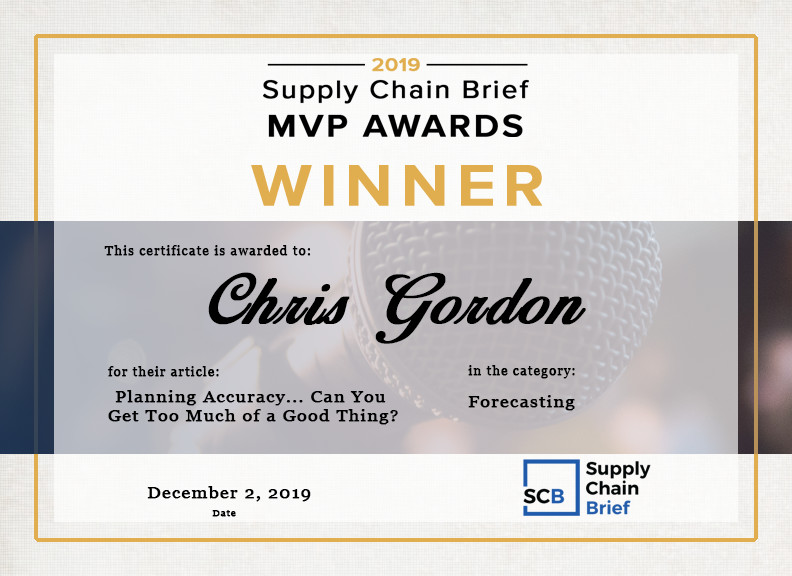Planning Accuracy…Can You Get Too Much of a Good Thing?

Fulfilling the need for resilience to change in long–term planning while providing accuracy in short–term planning can improve business performance and reduce stress levels.
Attempting to forecast the unforecastable is a tendency of many supply chain professionals. It’s hard for us to accept that despite the progress made in forecasting technology – and the emergence of AI & ML – many products remain truly unpredictable when looking towards a longer horizon. And looking towards a longer horizon is a must because while demand calls to be serviced in near real time, ramping up production assets can move at a glacial pace.
Pursuing accuracy in a long–term planning exercise can bring a lot of unnecessary stress. It typically brings an answer that is precise, but wrong and often unresponsive to changes in the market.
A more robust approach is to consciously forsake SKU-level accuracy, move up the product hierarchy and classify production by its current and potential capabilities. Running a multitude of optimization scenarios will instead expose a plan that is projected to best meet your financial needs and is most resilient to inevitable but unpredictable changes in the market.

What’s changed with long–term planning? Power and convenience – no longer do you have to invest countless hours into Excel to calculate a plan. Technology now exists to leverage the power of optimization in a convenient form to produce a multitude of optimized scenarios in the planning meeting itself. The process has become dynamic and the convenience factor enables updated long–term scenarios to be run quickly at a far more frequent interval. Indeed, it’s already possible that in between meetings, optimizations continue to occur and result in a notification if a particular plan moves too far away from a pre-determined range.
What’s changed with long–term planning? Power and convenience – no longer do you have to invest countless hours into Excel to calculate a plan. – Tweet this
If accuracy doesn’t have a home in long–term planning – where does it belong?
Resilience becomes too abstract and accuracy increases in importance as the planning horizon shortens. You can’t deliver a category to a customer; they want specific SKUs manufactured with specific machines. Typically, horizons of 6 months or less require specific actions to be taken – commitments are made.
One of the most incredible examples of short–term execution excellence is MISO and GE Grid Solutions’ use of AIMMS to improve reliability and efficiency in the U.S. power grid. In an industry where it takes up to 7 years to bring new production assets online, consumers express their demand at the flick of a switch in real time. When over 1000 production assets are being optimized in 15–minute intervals – accuracy clearly has a home.
So what’s really new here – what’s the game changer?
Cool stand-alone applications have been around for a while. They are more powerful now but it’s an incremental change.
If you’re prepared to match the most appropriate approach, resilience or accuracy, with the right horizon, we can then move on to removing the many seams between these horizons and bringing in convenience. A digital representation of the supply chain with full flexibility of time horizons and product hierarchies presents the possibility to plan appropriately and optimally at each horizon. We need to stop wasting time seeking accuracy where it can’t exist and use the time and technology now available to us to make our strategic decisions count and follow through to seamless execution.
How do you see it? What are your experiences? I recommend Gartner’s Getting Ready for the Future: Strengthen Your Supply Chain Planning CORE for further reading on this topic.





